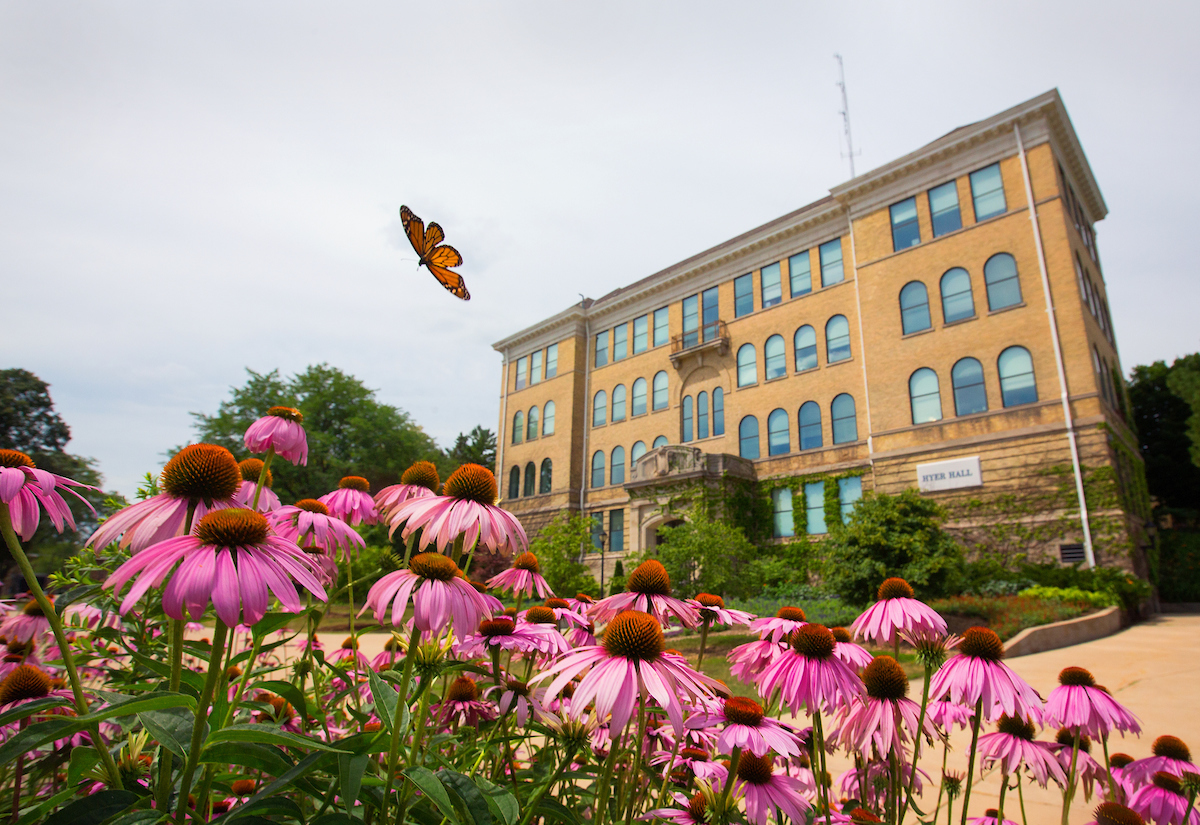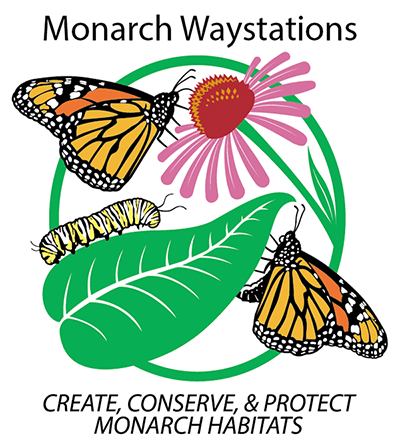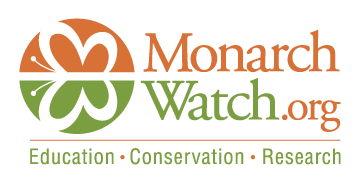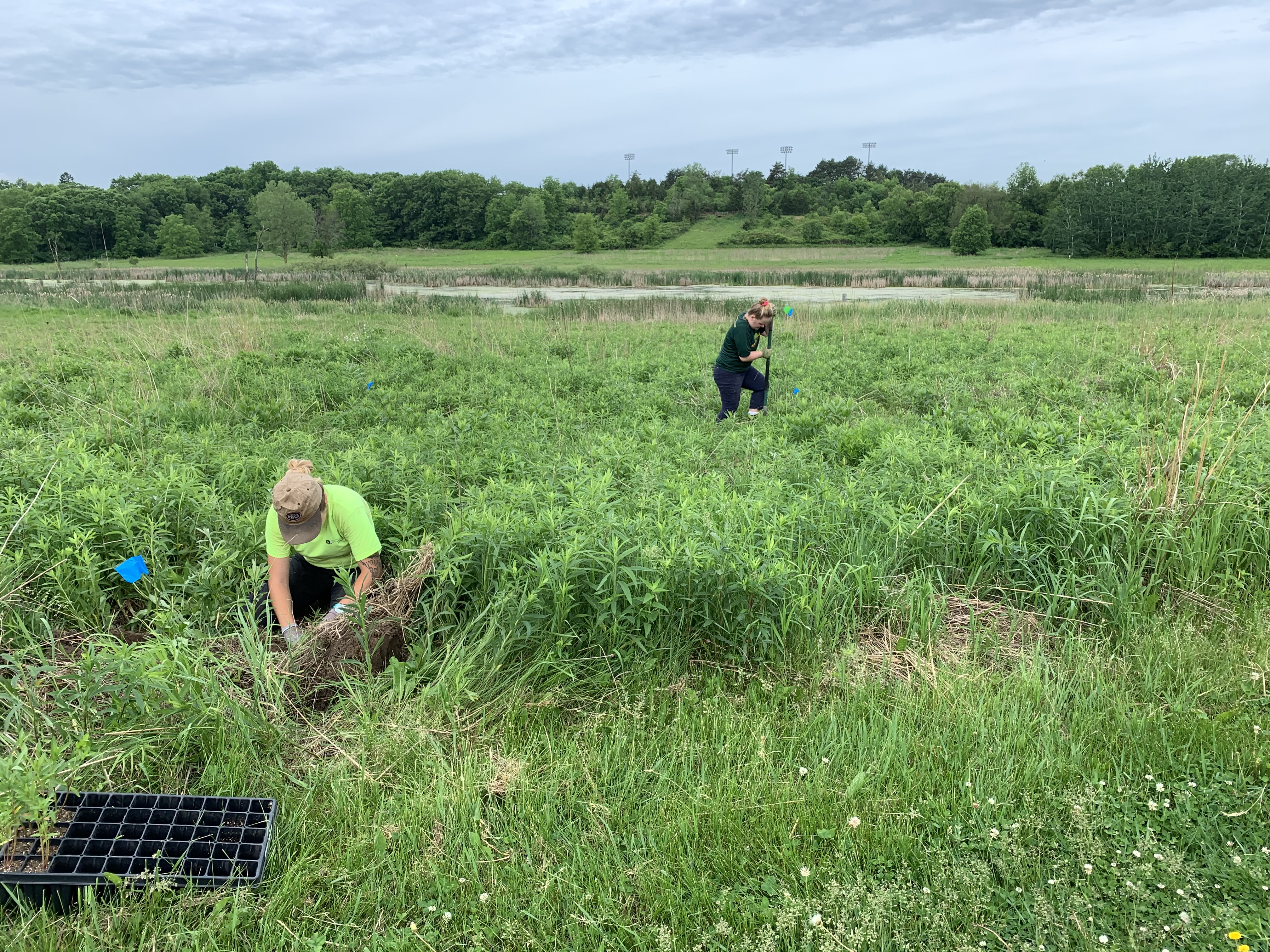The UW-Whitewater Sustainability Office is excited to extend our commitment to local wildlife by joining the Monarch Watch to establish the UW-Whitewater Nature Preserve as a Monarch Waystation and expand the value of this habitat by planting nearly 400 milkweed plants, including swamp (asclepias incarnata), common (asclepias syriaca), and butterfly weed (asclepias tuberosa), through the Monarch Watch’s Bring Back the Monarchs program. This generous contribution from the Monarch Watch is valued at approximately $1,000 and will support countless monarchs for the Whitewater community to enjoy. Our Sustainability Office Grounds Intern, Emily, identified this opportunity and completed the application.
Monarch Watch is a nonprofit education, conservation, and research program based at the University of Kansas that focuses on the monarch butterfly, its habitat, and its spectacular fall migration. The mission statement of Monarch Watch is “to provide the public with information about the biology of monarch butterflies, their spectacular migration, and how to use monarchs to further science education in primary and secondary schools. We engage in research on monarch migration biology and monarch population dynamics to better understand how to conserve the monarch migration. We also promote protection of monarch habitats throughout North America.”

UW-Whitewater is also be participating in the Monarch Waystation program and adding signage around campus to identify areas that are similar to the main Monarch Waystation in the reconstructed prairie of the UW-Whitewater Nature Preserve. You can help by creating “Monarch Waystations” (monarch habitats) in home gardens, at schools, businesses, parks, zoos, nature centers, along roadsides, and on other unused plots of land. Creating a Monarch Waystation can be as simple as adding milkweeds and nectar sources to existing gardens or maintaining natural habitats with milkweeds. No effort is too small to have a positive impact.

The UW-Whitewater Nature Preserve is 100 acres total, with about 55 acres being reconstructed as a prairie habitat. We are rebuilding the area as a brand new prairie, so the oldest parts of our prairie are only 25 years old. Pesticide-free maintenance, controlled burns, and prairie seed collection conducted by the Sustainability Office and Grounds Crew results in a healthy, natural space filled with a diverse array of native plant species for humans and wildlife to enjoy. Learn more about our fall volunteer activities collecting prairie seed.
We already have several species of milkweed in the Nature Preserve, including whorled, common, and swamp milkweed. These plants are important for monarch larvae to eat, which is what most people think about when they think of monarchs. We also have a lot of flowering native prairie species, especially different types of goldenrod, that are important sources of nectar to adult butterflies. When the goldenrod blooms in late summer, usually around mid-September, the prairie is filled with hundreds of monarchs! It is not uncommon to see dozens of them in a small area feeding on the nectar of goldenrods.
Common milkweed (A. syriaca) grows in sandy, clayey, or rocky calcareous soils. It occurs along the banks or flood plains of lakes, ponds, and waterways, in prairies, forest margins, roadsides, and waste places. Swamp milkweed (A. incarnata) is a tall plant with fragrant, showy clusters of pink and light purple flowers. It does well in landscape plantings with moist soil and in plantings near bodies of water. Unlike many ornamentals, swamp milkweed tolerates heavy clay soils and is very deer-resistant. It is a more cultivated alternative to common milkweed that is also attractive to egg-laying Monarchs. Butterfly milkweed (A. tuberosa) is ideal in semi-dry places where it can spread without presenting problems for other ornamental species. Butterfly milkweed does well in sandy, loamy, or rocky calcareous soils of prairies, roadsides, and waste places.
Please consider visiting the UW-Whitewater Nature Preserve at the Hoffman Kiosk to enjoy our reconstructed prairie and stay on the lookout for monarchs in all phases of their life cycle!

